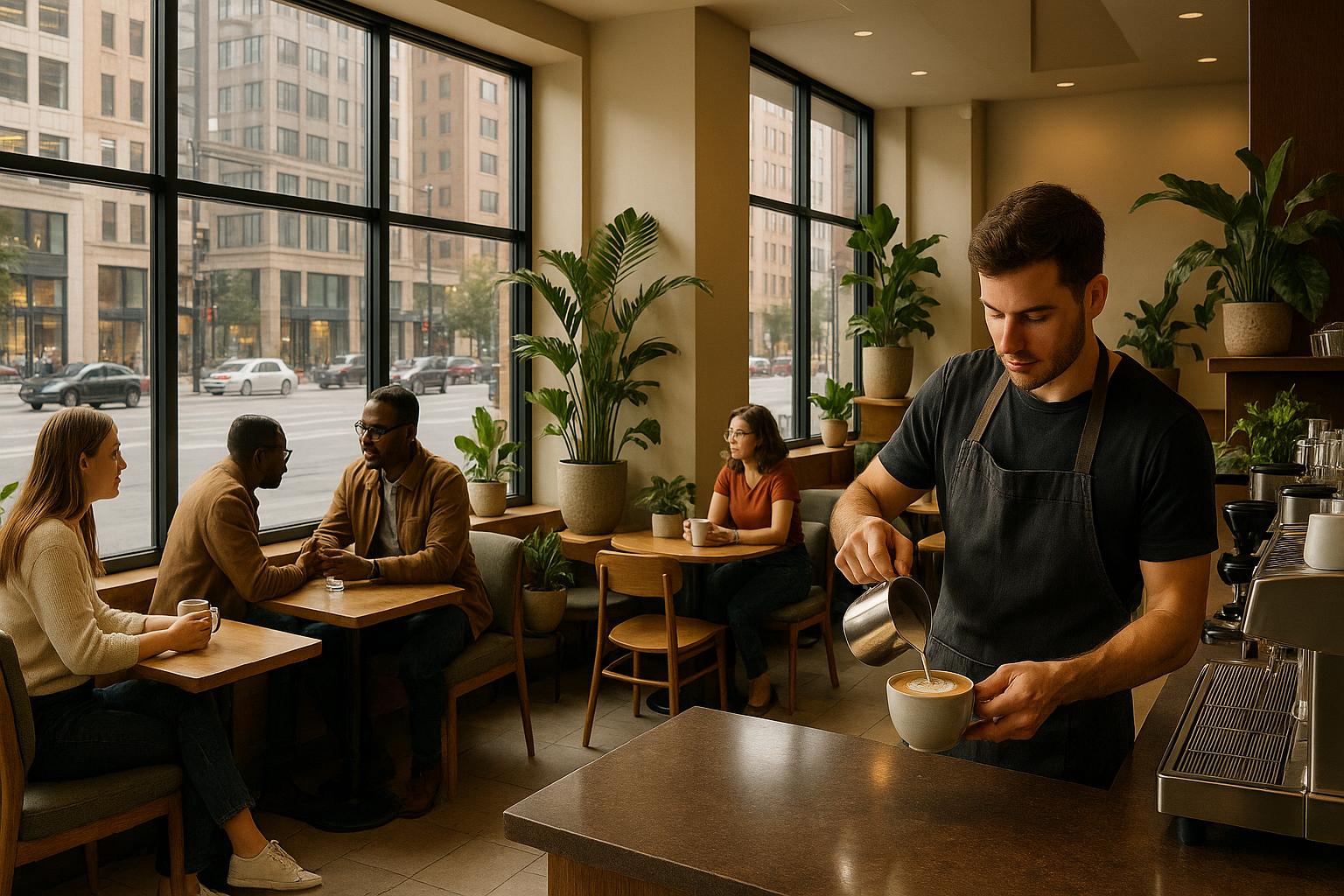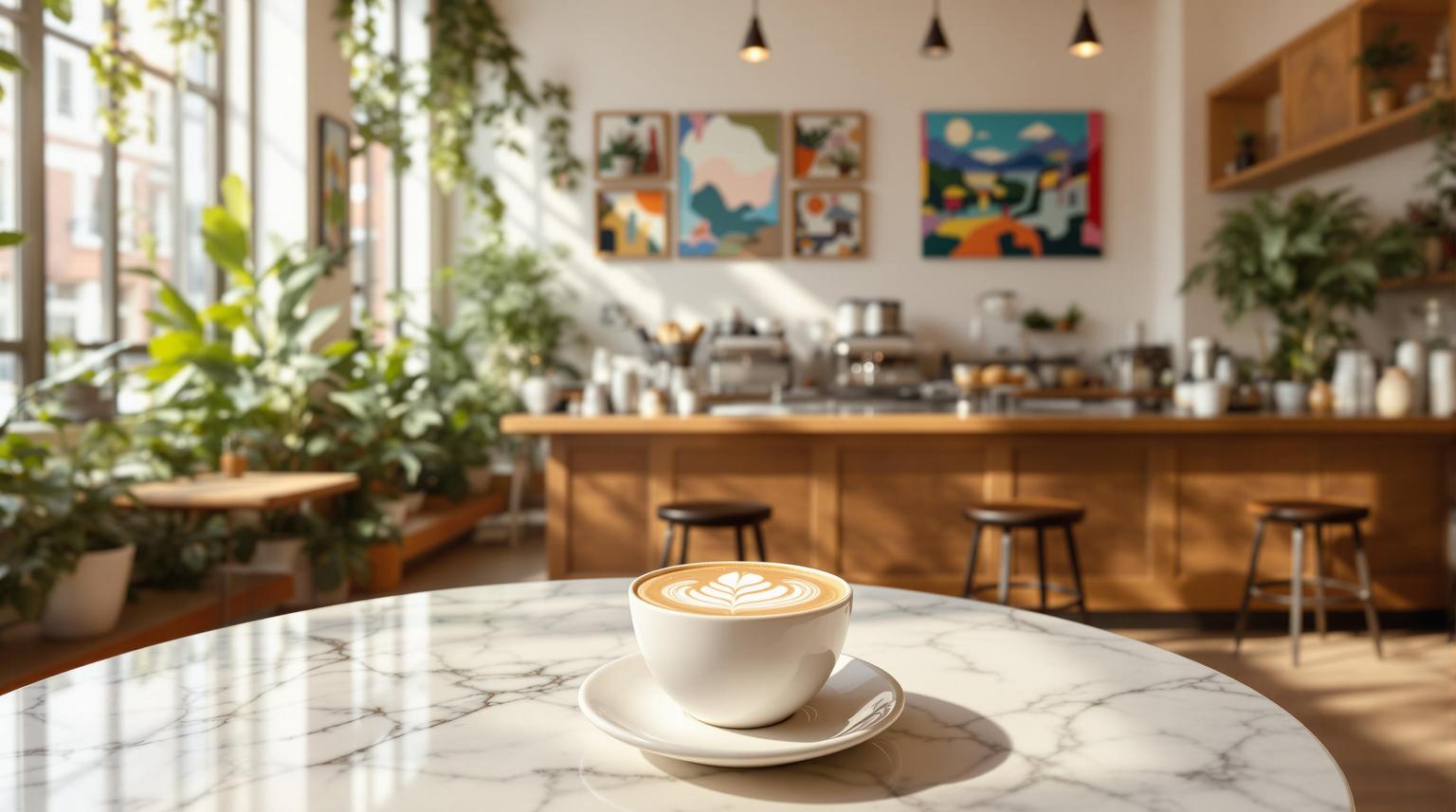Chicago's cocktail scene is buzzing with the rise of espresso martinis. These coffee-based cocktails, traditionally made with vodka, coffee liqueur, and espresso, are being reimagined by local distilleries and bartenders. From ready-to-drink options like CH Distillery's "CH Espresso Martini" to bold new creations like the Carajillo, the city offers a range of options for coffee and cocktail lovers. Here's what you need to know:
- Local Distilleries: Places like KOVAL Distillery are crafting espresso martinis with locally made spirits, highlighting bold flavors and regional ingredients.
- Classic Espresso Martini: A timeless favorite with a perfect balance of espresso bitterness and coffee liqueur sweetness.
- New Coffee Cocktails: Drinks like the Carajillo, featuring Licor 43 and espresso, are gaining popularity with creative ingredient twists like spices, cold brew, and alternative liqueurs.
Whether you prefer the reliability of classic recipes or the experimentation of new coffee cocktails, Chicago's cocktail culture has something for every palate.
Chicago Espresso Martini Tour!
1. Espresso Martini with Local Spirits
Chicago's craft distilleries are shaking up the classic espresso martini by using locally made spirits, and KOVAL Distillery is a standout in this movement.
Ingredients
KOVAL's take on the espresso martini combines its locally crafted vodka, coffee liqueur, espresso, and cold brew. This cocktail is available for $13[1].
Flavor Profile
The espresso martini at KOVAL Distillery highlights the bold, organic flavors of their locally produced spirits. Their dedication to artisanal methods shines through in every sip, creating a cocktail that embodies the essence of Chicago. This distinctive taste has been drawing in cocktail enthusiasts across the city.
Popularity
KOVAL Distillery proudly calls itself "Chicago's premier craft spirits experience" and is known for its "award-winning spirits", as noted on its tasting room menu[1]. This reputation cements its status as a celebrated local brand in Chicago's thriving craft scene.
2. Classic Espresso Martini
Ingredients
A classic espresso martini is built on just four key ingredients: vodka, freshly brewed espresso, coffee liqueur, and simple syrup [2][3][4]. The freshly brewed espresso plays a crucial role, adding its rich oils and creamy crema to achieve that iconic frothy top.
Flavor Profile
The magic of this cocktail lies in its balance. The bold bitterness of espresso is perfectly offset by the sweetness of the coffee liqueur and simple syrup, creating a harmonious and indulgent flavor [2][3][4].
sbb-itb-1371159
3. New Coffee Cocktails (e.g., Carajillo)
Ingredients
The Carajillo, a cocktail with Spanish roots, is making waves in Chicago’s bar scene. Traditionally crafted with Licor 43 - a liqueur known for its vanilla and citrus undertones - it’s paired with freshly brewed espresso and garnished with a cinnamon stick. But bartenders are shaking things up by experimenting with ingredients like cold brew concentrate, amaretto, bourbon, or even coconut cream. Additions such as cardamom, maple syrup, and other spices bring fresh twists to this classic, offering a playground of flavors for adventurous drinkers.
Flavor Profile
This cocktail leans into a rich, dessert-like sweetness that sets it apart from the sharper bitterness of an espresso martini. Licor 43’s warm vanilla flavor gives the drink a creamy, custard-like finish. Many of these modern takes on the Carajillo embrace cozy, comforting notes with spices like cinnamon, nutmeg, or cardamom, creating a layered experience that evolves beautifully with each sip.
Popularity
These reimagined coffee cocktails are quickly becoming a staple in Chicago’s cocktail scene. Their striking presentation - often served in clear glassware to highlight the deep, rich hues of coffee - makes them a hit on social media, further fueling their rise in popularity.
Creative Twists
Chicago’s bartenders are known for blending local flair with classic recipes, and their take on coffee cocktails is no different. Many bars source locally roasted cold brew from neighborhood coffee shops, adding a personal touch to their creations. Some even use coffee ice cubes that melt slowly, intensifying the drink’s flavor as you enjoy it.
Seasonal variations keep things exciting: summer versions often feature chilled coffee bases, while winter options embrace hot espresso served in warmed glassware. For those looking to explore multiple styles, some venues even offer tasting flights of coffee cocktails, allowing guests to sample a range of inventive flavors in one sitting. It’s a delicious way to experience Chicago’s ever-evolving cocktail culture.
Pros and Cons
Different styles of espresso martinis come with their own set of advantages and drawbacks. Here's a closer look at how these variations stack up for both customers and bartenders:
| Aspect | Espresso Martini with Local Spirits | Classic Espresso Martini | New Coffee Cocktails (e.g., Carajillo) |
|---|---|---|---|
| Ingredients | • Pros: Incorporates local spirits, adding a regional twist • Cons: Can be pricier and may face seasonal availability challenges |
• Pros: Relies on standard ingredients for consistency • Cons: Misses the charm of local character |
• Pros: Encourages inventive ingredient combinations • Cons: Often requires specialty ingredients and careful sourcing |
| Flavor Profile | • Pros: Delivers a complex, regional flavor experience • Cons: Might not appeal to all palates due to its complexity |
• Pros: Offers a familiar and balanced coffee taste • Cons: May feel predictable to some |
• Pros: Brings modern, creative flavor twists • Cons: Balancing sweetness and spice can be tricky |
| Market Appeal | • Pros: Draws in craft cocktail fans and encourages local engagement • Cons: Appeals to a more niche audience |
• Pros: Widely popular with consistent demand • Cons: Faces stiff competition in the market |
• Pros: Trendy and visually appealing, perfect for social media • Cons: Popularity can vary with trends and seasons |
| Preparation & Training | • Pros: Inspires bartenders to get creative and share local stories • Cons: Requires extra training and familiarity with unique spirits |
• Pros: Simple to prepare, with minimal training needed • Cons: Leaves little room for creative experimentation |
• Pros: Allows for artistic presentation and innovation • Cons: Demands ongoing staff education and longer prep times |
Ultimately, the choice depends on the establishment's goals. Local spirit-based options bring a distinct story and flavor but come with higher costs and complexity. Classic recipes offer reliability and widespread appeal, while modern coffee cocktails attract trend-conscious patrons, even if they require more effort to prepare.
Conclusion
Chicago's espresso martini scene is a fascinating mix of creativity and tradition. The city’s cocktail artisans skillfully combine local flair with timeless classics, while also embracing modern twists like the Carajillo.
The examples from local venues highlight this ingenuity. At Adalina, you can choose between Grey Goose Vodka or Flecha Azul Reposado Tequila, paired with Cafe Borghetti Liqueur and Sparrow Espresso for a refined experience [7]. Meanwhile, Cara Cara Club takes a bold approach with a "slushie-like" espresso martini topped with a custard-like foam [5].
Chicago offers something for everyone. Whether it’s Aba’s upscale take on the drink, Bar Cargo’s cold brew-infused option, or a hidden gem in a neighborhood café, the city’s espresso martini offerings cater to all preferences [5][6]. For those looking to explore, BestCafeChicago.org is a great resource for discovering coffee shops across the city.
As the cocktail scene continues to grow, Chicago’s espresso martini culture will undoubtedly strike a balance between innovation and approachability, ensuring it remains a cherished part of the city’s vibrant identity.
FAQs
What makes espresso martinis in Chicago stand out when crafted with local spirits?
Espresso martinis in Chicago have a special charm, thanks to the city's thriving craft scene. They often feature locally roasted coffee and spirits from Chicago-based distilleries, giving them a flavor that feels distinctly tied to the city.
This local touch brings a new spin to the classic cocktail. It’s not just about the drink - it’s about experiencing Chicago’s commitment to quality and creativity in every sip.
How do Chicago bartenders add seasonal flavors to their espresso martinis?
Chicago bartenders are putting a fresh spin on espresso martinis by blending in seasonal flavors that reflect the time of year. During the fall, you might sip on versions infused with pumpkin spice or a dash of cinnamon. Winter brings cozy twists like peppermint or rich chocolate notes. When spring and summer roll around, expect lighter, brighter options featuring floral hints like lavender or fruity bursts of orange or raspberry.
Adding to the charm, many local spots incorporate regional spirits to give their espresso martinis a distinct Chicago flair. These seasonal updates keep the drink lively and appealing, making it a go-to choice for cocktail lovers no matter the season.
What challenges do bartenders in Chicago face when creating coffee-based cocktails like the Carajillo?
Bartenders in Chicago encounter unique challenges when crafting coffee-based cocktails like the Carajillo. One of the trickiest parts is finding the perfect harmony between the bold, layered flavors of coffee and the alcohol. If one overpowers the other, the drink loses its appeal. On top of that, preparing top-notch coffee elements - like pulling a flawless espresso shot - demands both precision and skill, which can be tough to manage during a busy shift.
Another hurdle is consistency. Every drink needs to deliver the same flavor and presentation, no matter how hectic the bar gets. At the same time, bartenders need to get creative to stand out in Chicago’s competitive cocktail scene, all while catering to the varied tastes of their customers. This combination of precision, creativity, and adaptability makes crafting coffee cocktails in the city a true blend of art and science.


